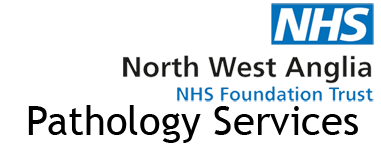Bilirubin (total)
|
Assay |
Bilirubin (total) |
|
Key Words |
TBIL |
|
Specimen Collection |
Serum (brown), Plasma (orange) |
|
Turnaround time |
8hrs |
|
Test indications |
Diseases or conditions which, through haemolytic processes, produce bilirubin faster than the liver can metabolize it, cause the levels of unconjugated (indirect) bilirubin to increase in the circulation. Liver immaturity and several other diseases in which the bilirubin conjugation mechanism is impaired, cause similar elevations of circulating unconjugated bilirubin. Bile duct obstruction or damage to hepatocellular structure causes increases in the levels of both conjugated (direct, soluble) and unconjugated (indirect, insoluble) bilirubin in the circulation. |
|
Interferences |
Cyanokit (Hydroxocobalamin) may cause interference with results. Results from certain multiple myeloma patients may show a positive bias in recovery. Not all multiple myeloma patients show the bias and the severity of the bias may vary between patients. Significantly elevated immunoglobulins (e.g. IgG) may cause small increases in measured bilirubin. Indocyanide Green (ICG), used in medical diagnostics, interferes with the assay. Samples containing ICG must not be measured
|
|
Reference Range |
<21 umol/L |
|
2.2% |
|
|
26.0% |
|
|
Minimum retesting interval |
Liver function test requests made within 2 days of a previous result being available on a patient are intervened |



